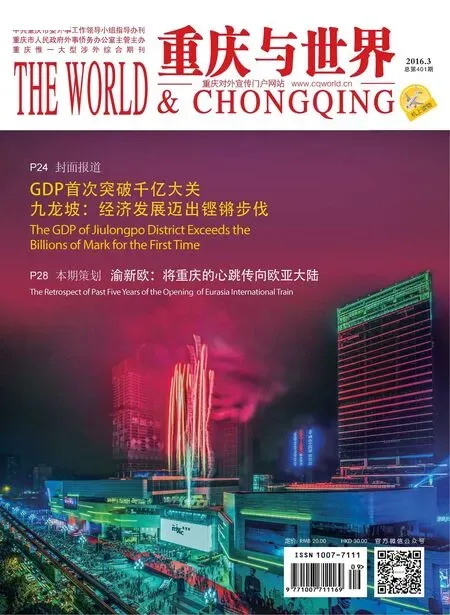找寻城市记忆来一次重庆的“老街小巷游”
□ 文/本刊记者 杨艳 图/方丽
找寻城市记忆来一次重庆的“老街小巷游”
□ 文/本刊记者 杨艳 图/方丽
要说漫步城市,北京有胡同、上海有里弄、广州有骑楼街,重庆有无数条百年历史老街,长长短短、或热闹或僻静,大街小巷诠释着山城的个性和特质。它们就像血管一样,延伸到城市各个角落,滋养着这座城市。
我们本次步行以七星岗为起点,沿着领事巷、山城巷、鼓楼巷,经过抗建堂、金刚塔、打枪坝、仁爱堂医院,有吊脚楼、灰砖瓦房,这些老建筑隐藏其间,与居民和谐共处。经过多年的城市改造,老巷也有了新的现代气息,汇聚了重庆市井生活的缩影,一面繁华喧嚣,一面静谧悠远,一道道坡坡坎坎勾勒出重庆人多元化的生活空间,时尚重庆与市井重庆相互融合,相得益彰。
这些深深融入重庆人生活中的小巷和老建筑,往往都有着深厚的历史沉淀,不知吸引着多少老重庆人,让他们在这里回溯着自己年轻时的记忆。
抗建堂 中国话剧圣殿
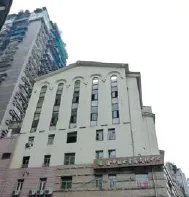
从七星岗轻轨站出发,第一个要看的老建筑就是抗建堂。位于观音岩车站旁,一栋普通的灰白色建筑经历数十年风雨,稍不留神就从身边擦身而过。建筑是1940年郭沫若决定修建的,是抗战时期演出话剧的主要场所之一。中国话剧史上的诸多著名的经典剧目,如《清宫外史》《芳草天涯》《棠棣之花》《虎符》《风雪夜归人》《重庆屋檐下》《屈原》《蜕变》等都是在抗建堂成功演出。
抗战时期,重庆成为大后方戏剧运动的中心,当年一大批知名的作家、导演、名演员云集重庆,话剧运动在重庆形成了空前的高潮。话剧发展了,但可供演出的剧场却很奇缺。当年郭沫若兼任中国电影制片厂所属的中国万岁剧团团长后,针对当时只有国泰大戏院可演话剧的情况,决定新建一所话剧剧场,以解决当时重庆戏剧界名家荟萃,而剧场奇缺的困难。中国电影制片厂第二摄影棚地处中山一路马路边,市声嘈杂,不利于拍摄电影,于是就把该处建为剧场,由名导演史东山的夫人华旦妮具体负责改建,用“抗战建国”口号而取名“抗建堂”。
如今的抗建堂常驻的剧团是重庆市话剧团和重庆儿童艺术剧团。从门口的招贴海报来看,这里时常上演各种话剧,数十年过去了,这里仍旧是艺术家们表演的地方,它依旧焕发着光彩。
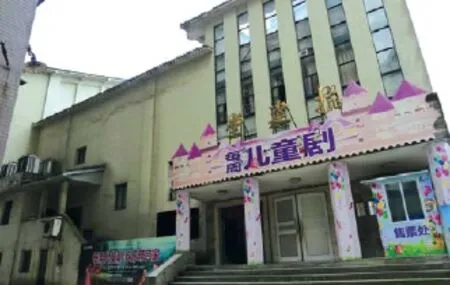
菩提金刚塔 城市的守护者

往背街小巷走,在纯阳洞附近就能看到一座垂云式花轮、三级圆形宝顶的宝塔式建筑。塔座用青石板铺砌,周围有铁栅栏,一位和善的大爷常年在此看管。作为我市直辖后首批市级文物保护单位之一,一直因其独特的建筑形式、集汉藏和中西于一体的文化风格及神秘的藏宝传说备受世人关注。尽管被高楼和大树包围,菩提金刚塔却依然抢眼,塔身的石刻经文依旧清晰。近年一部畅销网络小说《失踪的上清寺》中介绍塔中藏宝,引来不少人前往寻宝。
上世纪20年代末,原国民政府重庆第一任市长潘文华为扩建市区,决定开辟一条通远门以外(七星岗—上清寺)的汽车路。为了消除流言,潘文华决定根据佛经上的说法,建造一座“使死者超度、生者永得安宁、消灾避难”的金刚塔。
据了解,金刚塔修建历时两年,耗资4万银元,从奠基到落成,均由西藏喇嘛指导,并由佛学家张心若为金刚塔撰写了碑文。1930年金刚塔建成后,洛那活佛还率数十名喇嘛来此诵经祈祷,场面十分壮观。据记载,当时金刚塔香火兴旺,就这样一直默默地守护着这里。
打枪坝水塔 重庆第一座大型自来水厂

沿着石板路向下走,就已走在山城步道上了。路边有抱孩子遛弯的大妈、打麻将下象棋的大爷、打招呼寒暄的中年妇女……他们几乎都是居住在此的老居民。路过赫赫有名的纯阳酒家分道,往鼓楼巷走,再爬一段楼梯就到达一个平坝,建有古香古色的风雨亭,这就是传说中的打枪坝了。可惜很难近观打枪坝水塔,只能远观,它建在水厂内,被围墙包围住,外来人难以进入。这个建成于1932年的打枪坝水厂 ,是我市第一座大型自来水厂 ,如今已停用。打枪坝水塔是由著名专家税西恒主持修建。水塔边有一座碑,写着“税西恒之墓”,就是为了纪念这位总工程师。
在长江大桥北桥头,远眺就能看到这座欧式的高耸水塔。当年水厂的沉淀池、原水管部分仍在使用,为解放碑、较场口、七星岗、两路口等地数十万居民供水。当年就因为这里地势开阔,且在重庆老城渝中半岛最高处,这样能依靠自然高差向城区供水,故水厂选址于此,取水口选在大溪沟嘉陵江边。清代在此设有驻军炮台,坝子宽阔,官兵常在此演练射击,才取名“打枪坝”。
领事巷 此巷已无领事馆
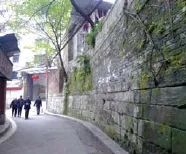
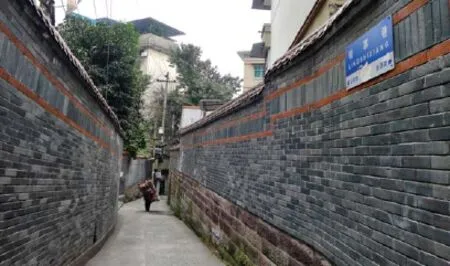
沿着七星岗通远门内的老城墙边闲走,便到了领事巷。乍听名字,把“领事馆”与“领事巷”混为一谈的人不在少数。其实这条小巷与现在的领事馆已没了关系。当年西方国家在重庆设立了第一个领事馆,1896年法国和美国也在重庆设立领事馆。当时的巴县衙门决定在通远门设立领事馆区,原本道路狭仄的小街巷便得名“领事巷”。
早在1876年,清政府与英国签订《中英烟台条约》。按照条约,英国可以派人至四川的重庆“驻寓”,“查看川省英商事宜”。1882年,英领事贺西到达重庆,贺西成为重庆近代对外关系史上的第一位外国使节。
一百多年过去了,领事巷这个地名至今存在,而且名声很响。只不过空有其名,领事巷早已没有领事馆的影子了。
法国仁爱堂 百年教堂隐闹市街巷
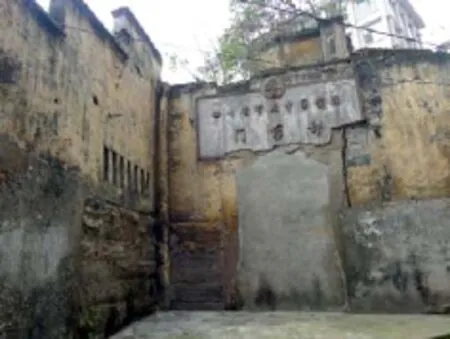
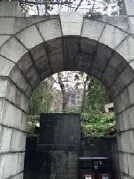
沿着领事巷一直往下走,经过四川省重庆市中医学校门诊部旧址,旁边有一门洞,门前垫有几块方石块,想必经常有人通行,探身进入,视野顿时豁然开阔。一栋圆形罗马柱与拱形窗门组合而成的西式建筑伫立在绿树丛中,弧形窗台上的花瓶式栏杆和窗户之间的罗马柱装饰相映成趣,仿佛一个风韵犹存的迟暮美人,静候在杂草与灌木丛生之中,这便是法国仁爱堂。尽管历经了百年的风雨沧桑,外墙上浮雕历历在目,它见证着重庆历史上最早的开埠。

1900年,山城步道上半段规划给各国领事馆,下半段规划给法国天主教会。1902年法国人在此修建了仁爱堂医院,还有教堂、修道院和神父住房。1944年改名为陪都中医院(即第一中医院前身)。在日本轰炸重庆的时候,各领事馆为了避免被飞机轰炸,在屋顶都刷上自己国家国旗,所以这一带的房子才得以幸存。据记载,这一带从前叫做“天灯街”,夜晚从远处往这一带看,百家灯火犹如星星点灯,地势又高,仿若在天上,所以叫“天灯街”。
仁爱堂就建在这个制高点上,在此可居高临下,长江、南岸和当年的珊瑚坝机场尽收眼底。整个建筑周边空旷 ,不难想象,建筑在当年是有多气派与壮观。
厚庐 军阀刘湘下属官邸
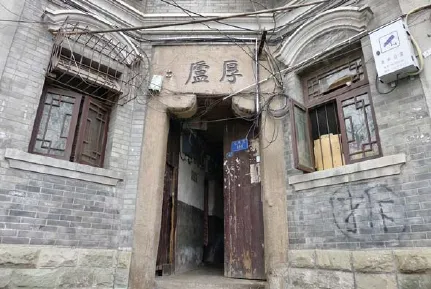
从仁爱堂旧址一路往下走,就能看到一座呈石库门建筑特色的小楼房,大门上写着“厚庐”两个大字。厚庐曾是四川军阀刘湘下属兰文斌师长官邸。抗战时期,国民政府的统治中心移至重庆,大批政府要员、军阀、买办、地主来渝大肆修建公馆,这只是其中之一。这些官邸建筑风格上,很多模仿外国近现代住宅建成。“厚庐”已是渝中区房管所房产,在对开的木门上,挂着“山城巷46号”的门牌号。
山城步道 山水尽收眼底

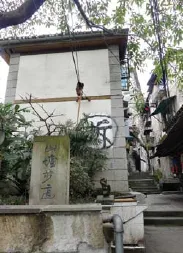
从仁爱堂旧址到马蹄街,是山城步道最精华的部分。鹅黄色的栈道栏杆凌空而建,沿着山壁蜿蜒而下。重庆是一个建在山上的城市,许多相邻的地方落差高达几十米,交通只能靠这种爬坡上坎的城市小道。

对于生活在这里的人们而言,住房狭窄,却寸土皆金贵。老街更像是一座露天客厅。聊天在街上,洗衣在街上。门前一个洗手池,他们一边切菜,一边相互聊天。自家房门大大开着,炉上开水咕噜噜地冒气。总有旅行人路过,探头张望,或是摄影留念,他们也习以为常。
一路上空气中飘来阵阵火锅香,就在厚庐不远,有一家没有店名的火锅店,三两桌火锅,食客一边吹着“龙门阵”,一边享受着拂面而来的江风,何乐而不为。偶遇一家旧书店,阳光灿烂的天气,摆出凉椅,旅行的人正好歇歇脚,泡上一壶茶,一坐就是一下午。
。
Speaking of walking around a city, it reminds us of Beijing’s Hutongs, Shanghai’s lanes, Guangzhou’s arcades, and Chongqing’s numerous old streets and small lanes. The mountainous city, Chongqing has many old streets which have a history over a hundred year, and all of those long and short, crowded or quite streets and lanes have interpreted the individuality and features of this city. These streets and lanes are just like bloods, stretching to every corner of the city, thus nourishing the city.
We started from Qixinggang to walk along the Consul lane, Shancheng lane, Gulouxiang, walking through Kangjiantang, Adamantine Tower, Daqiangba, Renaitang Hospital, and during the route, there are stilted buildings, brick houses with grey bricks, and all of these old buildings hide in this place and are harmonious with the residents. After urban renewal for many years, the old lanes have some new modern feeling, which have converged the epitome of Chongqing people’s folk daily life, and on the one hand, it’s noisy and fl ourishing, on the other hand, it’s quite and distant. Every slopes and ridges have drawn the outline of Chongqing people’s diversified living space. Fashionable Chongqing is coexisting with daily Chongqing.
These small lanes and old buildings that deeply integrated into Chongqing people’s life have profound historical precipitation, and it must appeal to many old Chongqing people coming here to recall their memories when they were young.
Kangjiantang The Holy Temple of Chinese Drama
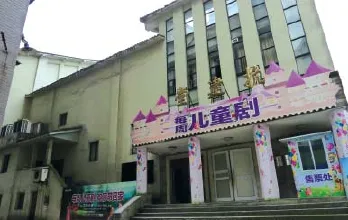
Starting from the light rail station of Qixinggang, the first old building that we must see is Kangjiantang, which is situated besides the Guanyinyan station, and this hoary building has experienced wind and rain for tens of years, and it can be easily missed if you don’t notice. In 1940, Guo Moruo decided to build such a kind of building, which was one of the important places to perform plays during the War of Resistance. Many famous classic plays of Chinese drama history, such as, Qinggong Waishi, Fangcao Tianya, Tangdi Zhihua, Hufu, Latecomer in the snow, Under the eaves of Chongqing, Quyuan, Changes and so on had been put on successfully in Kangjiantang.
“王小景同学,你觉得大东沟海战,北洋水师失利的原因有哪些?”詹寻站在显示屏右边的电子地图前,看着用红蓝箭头分别标注的清军和日军的路线。
During the period of the War of Resistance, Chongqing had become the center of drama movement. At that time, a large batch of famous veteran writers, directors, actors, and great masters gathered in Chongqing, then the drama movement had formed unprecedented climax in Chongqing. But when the drama was developing, the theatres that provided for performances were critically lack of. At that year, after Guo Moruo had an additional post in China Wansui opera troupe which belongs to the China Film Production Factory. Acting as the leader in the troupe, he decided to build a new drama theatre on the condition that only the Cathy Pacifi c Theatre can perform plays to solve the problem. The second photo studio of China Film Production Factory was situated on the kerbside of the Zhongshan fi rst road which was crowded and not suitable for fi lm shooting, and then this place was built into a theatre, and Hua Danni, the wife of famous director Shi Dongshan took charge of reconstructing. The name of Kangjiantang was named after the slogan---“resisting the war and founding a state”.
The resident troupes in Kangjiantang now are Chongqing Modern Drama Troupe and Chongqing Children’s Art Troupe. Seeing from the posters in the door, we can know that all kinds of plays have been put on here. After many years, many artists still perform here, which make this place glowing.
Bodhi Adamantine Tower The Guardian of the City
Walking to the small lane behind the street, nearby the Chunyangdong, we can see a building of pagoda form, with vertical clouds in floral whorl and three-level round pagoda top. The pagoda seat was paved by blue fl agstone, surrounded by iron fences. A kind old man guards here for a long time. As one of the first batches of municipal-level culture relic protection sites after Chongqing becoming a municipality directly under the central government, the pagoda has always been paid close attention to because of it’s unique architectural form, cultural style that integrated Chinese-Tibetan and Chinese and Western, and mysterious legend of the hidden treasures. Although been surrounded by high buildings and big trees, Bodhi Adamantine Tower is still eye-catching and the lapidarian scriptures in the pagoda are still clear. The Missing Shangqing Temple, a popular network novel has introduced that treasures are hidden in the pagoda, which has attracted many people coming here to discover treasures.
In the late 1920s, Pan Wenhua, the first mayor of former national government of Chongqing decided to build a motorway that can reach faraway besides Qixinggang to Shangqingsi in order to extend the downtown area. In order to eliminate the gossip, according to the introduction of Buddhist texts, Pan Wenhua decided to build the Adamantine Tower where the dead can release souls from purgatory, the living can obtain peace forever and remove ill fortune and take refuge. It’s reported that it took 2 years to build the Adamantine Tower and spent 40,000 silver dollars. From laying foundation to completion, the building of the pagoda was guided by Tibetan Lama and the tablet inscription was written by Zhang Xinruo, a Buddhist master. After the completion of Adamantine Tower in 1930, the living Buddha Luona brought tens of Lamas here to chant sutras, which was very spectacle. It was recorded that the incense was very thriving in this tower at that time, and since then, it is here protecting this place silently.
The water tower of Daqiangba The First large-scale Water Plant in Chongqing

Walking downward the slate road, you will find that you are already walking on the footpath of the mountain city. On the roadside, there are many elder ladies who embrace the baby to take a walk, old men who are playing mahjong and playing chess, and middle-aged women who are greeting to each other…… All of these people are old residents here. Walking through the famous Chunyang wine shop toward Gulouxiang, going upstairs, and there is a flat land where the Fengyu pavilion was built, surrounded by walls, so the outsiders can’t get in. The water plant of Daqiangba was completed in 1932, and it was the first large-scale water plant in Chongqing, however, nowadays it is shut. The water tower of Daqiangba was built under the leading of famous expert Shui Xiheng. Besides the water tower, there is a stone tablet, with “the tomb of Shui Xiheng” on it, which is used to in memory of the chief engineer.
At the northern head of Yangtze River Bridge, if you look far into the distance, you can see the European-style towering water tower. The sedimentation tank and part of the former water pipes are still in use, which can provide water for hundreds of thousands of residents in Jiefangbei, Jiaochangkou, Qixinggang, Lianglukou and other places. In those years, because of the wide and open terrain, and situating in the highest point of Yuzhong peninsula in Chongqing’s old city, this place can provide water for the downtown area depending on the natural elevation differences. So the water plant was built here, and the intake was in Daxigou, besides Jialing River. In Qing dynasty, there were set up fort barbette. With the open land, the soldiers practiced shooting here, so it was called “Daqiangba”.
The Consul Lane with no Consulate in This Lane
Walking along the walls of the old city in the Qixinggang Tongyuanmen, you have arrived at the consul lane. When listening to the name at the fi rst time, many people confused consulate with consul lane. Actually, the small lane has nothing to do with present consulate. At that time, the western country set up the first consulate here. In 1896, France and the United States had set up consulates in Chongqing. The Ba county government office at that time decided to set up consulate area in Tongyuanmen, so the small lane with narrow road was once called “the consul lane”.
Early in the 1876, the Qing Government had signed the Sino-British Yantai Treaty with Britain. According to the treaty, Britain can dispatch their people to station in Sichuan’s Chongqing to look over the corresponding affairs of British business in Sichuan. Later on, in 1882, Hexi, the consul of Britain arrived at Chongqing, and he had become the first envoy from foreign country in the history of Chongqing’s relations with foreign countries in modern times.
Over more than 100 years, the toponymy of consul lane is still existing and well-known. However, it just a name and there is already no any consulate in the consul lane.

France’s Ren’aitang Hundred-year Church Hidden in the Lanes of Streets
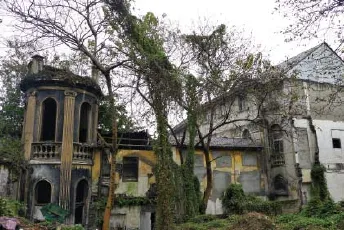
Walking along the consul lane and downward, passing through the old site of out-patient department of Sichuan’s Chongqing school of traditional Chinese medicine, there is a door opening besides, and in front of the door, there are several square stones, which mean that people usually pass through here. And when you enter into it, the view is suddenly opened. A western building that consists of a round marble pillar and arching windows stands in the green forest, the handrail of vase-style and the decoration of marble pillar between windows reflect each other, which is just like a charming beauty in her late time, and very beautiful, waiting silently in the weeds and bushiness. This is what we called France Ren’aitang. Although it had experienced hundred-year wind and rain, the relief on the walls are clear, which witnessed the earliest port opening in the history of Chongqing.
In 1990, the upper section of footpath of mountain city had been given to the consulate of some country, and the other section had been granted to France’s Roman Catholic Church. In 1902, the French had built Ren’aitang Hospital, churches, monasteries and the house for godfather here. In 1944, Ren’aitang Hospital had changed its name to auxiliary capital traditional medicine hospital (the predecessor of the first hospital of traditional Chinese medicine). At the time when Japan bombed Chongqing, every consulate placed their own country’s fl ags on the roof in order to avoid being bombed by airplanes, so the houses in this area can be kept. According to the record, this area was once called Tiandeng street, when looking here from faraway in the night, the lights of people’s house were just like stars, plus with the high terrain, which made it just like in the sky, so it was called“Tiandeng street”.
Ren’aitang was just built in this commanding height. Standing here and looking down from a height, you can see Yangtze River, Southern bank and former coral dam airport. The surrounding area of the whole building is empty, so it’s not diffi cult to imagine the spectacle and style of the building in those years.
Houlu The Subordinates’ Mansion of Warlord Liuxiang
Walking downward from the old site of Ren’aitang, you can see a building with arching stone gate, and two big chracters “厚庐” were written on the door. Houlu once was the mansion of Lan Wenbin, the subordinate of Liuxiang, the warlord of Sichuan. During the period of the War of Resistance, the governing center of national government moved to Chongqing, and a large batch of important staffs of government, warlords, compradors, and landlords came to Chongqing to build mansions, and this was just one of the mansions. In terms of architectural features, most of these mansions imitated the residences of foreign countries of modern times. Houlu has become the house property of Yuzhong District’s housing management office. The house number of “Shancheng lane No.46” was hung on the wooden folio door.

Shancheng Footpath Having a Panoramic View of Beautiful Sceneries
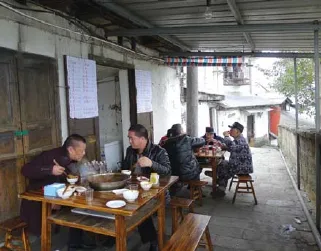

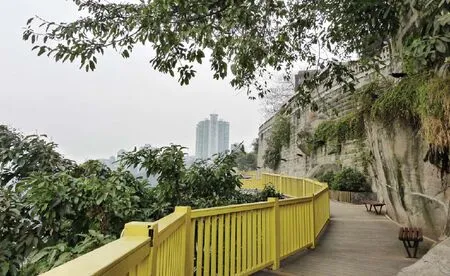
From the old site of Ren’aitang to Mati street, this was the most essential part of Shancheng footpath. The yellow plank road rails were built high up in the air, and wriggling down from the mountain. Chongqing is a city built on mountain, and the difference of level in many adjacent places has dozens of meters, so the transportation must depend on the city footpath that can help people climbing.
Walking on the squiggly plank road, there are hundredmeter long old city wall on the inner side, the bluestones, mosses, and ancient trees intersecting, and the view is open outside; the river water under the Yangtze River Bridge of Shibanpo and Caiyuanba Bridge is rolling, and the vehicles on the bridges are never-ending. The endless Shancheng footpath, walking a short part can bring different vision and sceneries. Overlooking Changbin Road, looking in the distance the Nanbin Road, looking far into the distance the Nanshang, in the multi-layered sceneries, the Chongqing is just in front of you.
For the people living here, although the house is narrow, every inch of land is precious. The old street is more like an open-air living room. People are chanting in the street and washing in the street. There is a hand washing sink in front of the door, then people can chop vegetables and at the same time chant with each other. The doors are open, and the boiling water on the stove is steaming. There always are tourists passing by, and they are looking around or taking a photo as a moment. And the people living here are accustomed to it.
Walking on the road, you can smell the taste of hotpot. There is a hotpot restaurant with no name nearby Houlu. And in this restaurant, you can see some peope having hotpots, and people are chanting and enjoying the wind blowing on their face, which is so happy. Then you can come across an old book store, in such fine weather, putting out chairs, so the tourists can have a rest, and making a pot of tea, you can sit for a whole afternoon.
Looking for Memories of the City A Journey to Chongqing’s Old Streets and Alleys
□ Written by Yang Yan Photo by Fang Li

